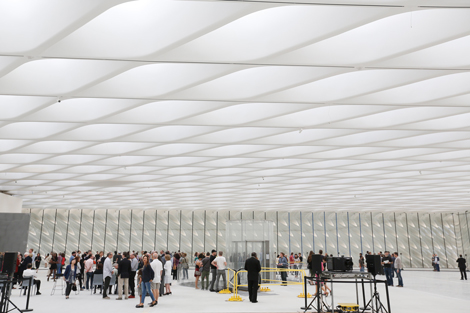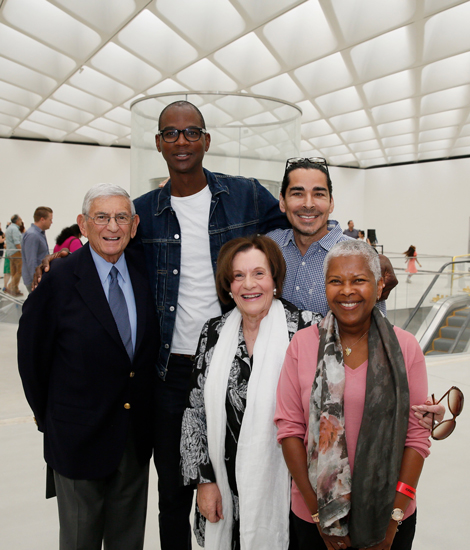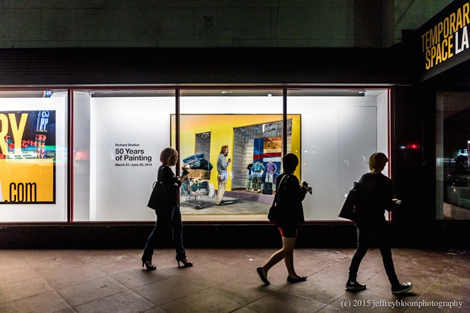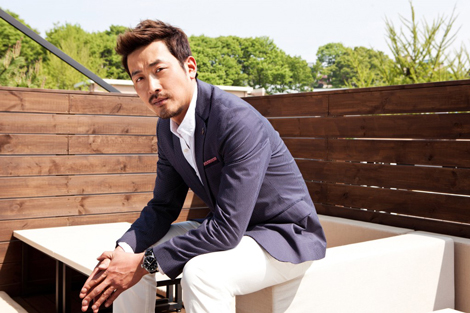SNEAK PEEK
Open House at The Broad on a Sunday Afternoon

Visitors in The Broad’s third-floor gallery space, before art walls are constructed. Photo by Ryan Miller/Capture Imaging.
I was lucky enough to get in on the one-day preview of The Broad, the new museum in LA that will house the important contemporary art collection of power philanthropists Eli and Edythe Broad. There was a viewing for invitees (such as moi) in the morning, then open to the general public via email registration from 3 to 10 p.m. The latter was “sold out” within minutes of online availability, which bodes well for interest in the museum when it finally does open this fall.
Upon arrival, we were quickly ushered from a corner of the unfinished lobby to the third floor gallery—a vast, squarish space canopied by the lacy “blocks” which New York firm Diller Scofidio + Renfro have designed as carapace for the building. Problems in fabricating these blocks are to blame in the delayed opening of the museum, which was supposed to have opened at the end of last year. The blocks are oblong and have an ovoid aperture in them, allowing in daylight—from the front along Grand Avenue and from overhead. However, to protect the art, there is no direct sunlight, and the roof blocks also have an adjustable system controlling in the amount of overhead light coming in.
And yes, it was glorious, as there were no walls, just a vast unobstructed expanse, with the cylindrical elevator popping up in the middle—not yet operational. We had ascended via a big utility elevator on the side.

Left to right: Eli Broad, artist Mark Bradford, Edythe Broad, Allan DiCastro and Ilene Norton, images from The Broad’s Sky-lit program, 2/15/15, photo by Ryan Miller/Capture Imaging.
Architect Elizabeth Diller of DS+R was there, fielding questions and acknowledging praise for the almost cathedral-like effects of the space. She seemed as awed as the rest of us. “I’m still seeing things, noticing things here,” she said, looking around to a far corner. When completed, the building will offer 120,000 total square-feet, including in-house storage and some 2,000 artworks in the permanent collection. Doors open to the public Sept. 20, and admission will be free—thank you for that, Eli and Edythe!
TEMPORARY SPACE
Testing Ground for a New Kind of Gallery
Richard Shelton is mad as hell at the art establishment, and he won’t take it anymore. So he decided to set up his own exhibition space. “I want to cut out the middle man,” he says during the opening of Temporary Space, temporarily in a storefront on Wilshire Boulevard, “and let artists have direct contact with the public.” A boisterous crowd is milling around us, enjoying the flowing drinks and examining the drawings and paintings, and otherwise hanging out on a Saturday night in a new addition to LA’s art scene. Tonight Shelton is wearing at least two hats—one, that of the man launching a different kind of gallery, and two, that of the artist first featured in this new kind of gallery.
His sense of mission is palpable. “I’m fed up with the art establishment,” he says. He feels it is run by art dealers and collectors—people who don’t have the interests of art or the artist at heart. He compares his efforts with that of the French Impressionists, who started up their own salon in the late 19th century, thumbing their collective noses at the stuffy French Academy.
His own career spans five decades—and his work reflects his fascination with the figure, including what he calls “Nude Expressionist” and “Nude Geometric.” His drawings and paintings reflect an adept hand, and a gift for composition. In the middle of the large space, a couple smaller rooms have been divided off to demonstrate a new software for displaying (and selling) artwork. Using an iPad, you can tap on small, thumbnail pictures—the drawing or painting selected quickly appears projected on a screen before you, so you can examine the work in detail.
Temporary Space aims to focus on mid-to-late career artists, the forgotten ones. Shelton believes that commercial galleries are overly obsessed with the new and emerging, while the truth is that any artist with a long career has an inventory of art that could be brought out and shown—and, hopefully, sold to collectors. His own show runs through June, followed by Margaret Nielsen and Scott Grieger (July 18–Aug. 29). In this new, artist-centric model, artists also stand to make more money—75% of the sales, versus 50% or so with commercial galleries. To further liven things up, they will be programming poetry readings, performances and panel discussions.
Temporary Space LA is at 5522 Wilshire Blvd. Los Angeles, CA 90036. Hours are: Monday thru Saturday from 10 a.m.-8 p.m.
For more information, check out temporaryspacela.com.
FILM STAR SHOWS IN U.S.
Ha Jung-woo at PYO
Around us are a series of vibrant drawings and paintings. The work is unexpected—it has closer affinities with street art and folk art than Korean art, old or new—people with green hair and blue lips, faces scored with lines, triangles and whorls. There are stylized animals, often fish and birds, and there are crosses—some Christian, some Celtic, some Greek. “Yes, I am a Christian,” he says. Bright colors fill in the spaces he’s defined with heavy lines (he generally draws with a marker). The show is already a hit—all of the smaller drawings and several paintings have sold.
Ha is self-taught, and took up art as a release from his highly pressurized life in the movies. He travels with paper, unstretched canvas and art supplies. “I work on my art whenever I have time, sometimes on the set during breaks and when I come home at night.” He spends part of the year in Hawaii, where he decompresses by working on art, and even in his borrowed LA apartment, he was working on new canvases right up until the opening. At the end of this interview, he excuses himself—to go back to work on more paintings.




















0 Comments